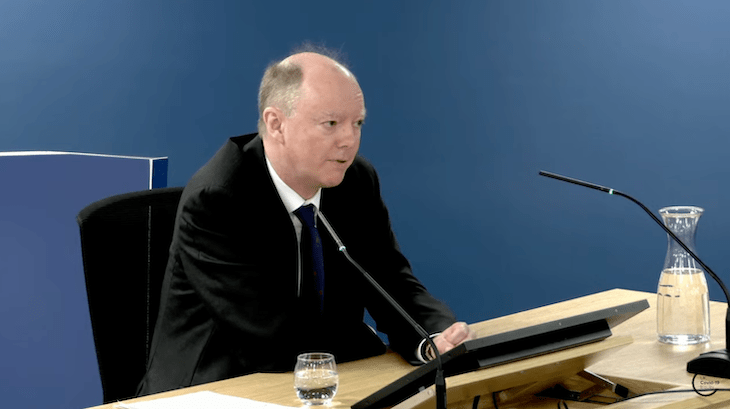Why was the UK plunged into a lockdown with such little understanding about the likely consequences? This week it is the scientists’ turn to appear before the Covid Inquiry and Sir Chris Whitty, the Chief Medical Officer, has highlighted a problem: the extensive and expensive UK pandemic planning did not consider lockdown as an option. This ‘might be considered a failure of imagination by a group of scientists who understood the nature of epidemics and their history,’ says Sir Chris, in his witness statement to the Inquiry.
With ‘the benefit of hindsight’, he said, the first lockdown in March 2020 was ‘a bit too late’. With this comment, Sir Chris denies the private judgement of Sir Patrick Vallance, the former chief scientific adviser, that he was a ‘delayer’ at the beginning of the pandemic. Inquiry lead counsel Hugo Keith KC also raised claims by Sir Jeremy Farrar, a member of the Sage advisory committee, that there was ‘palpable tension’ between the two top scientists. Sir Chris was keen to downplay these divisions, suggesting that Farrar ‘had a book to sell’ and that ‘the differences were extremely small’.
However, in his sober, dispassionate way, Whitty acknowledged that the scientists were split on the viability of lockdown. He described himself as being probably further in the ’let’s think through the disadvantages’ camp as the impact of interventions was being considered. Whitty’s concern in early 2020 was that the impacts of measures such as cocooning – a precursor to lockdown – and the closure of schools would be highest in areas of deprivation. But no damage assessment was ever published.
Further evidence will be heard today, ahead of Boris Johnson and Matt Hancock’s expected appearance in a fortnight’s time.







Comments